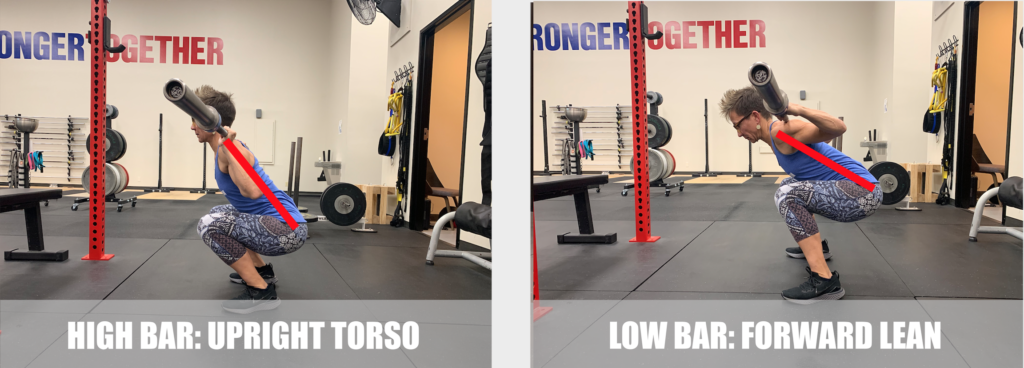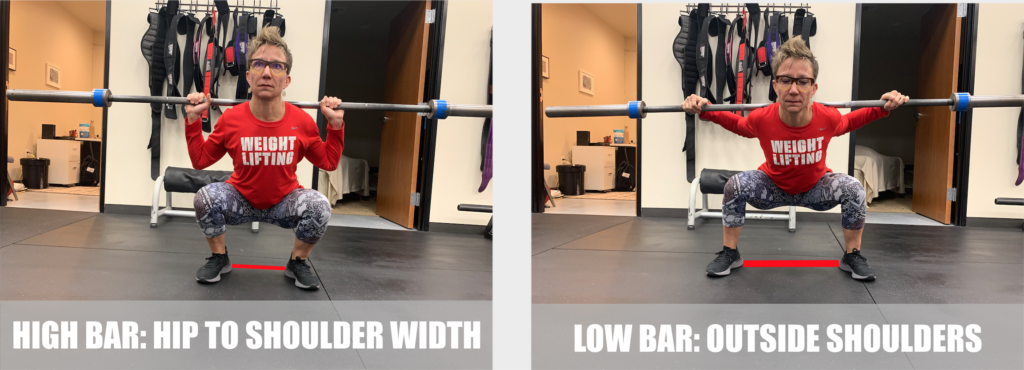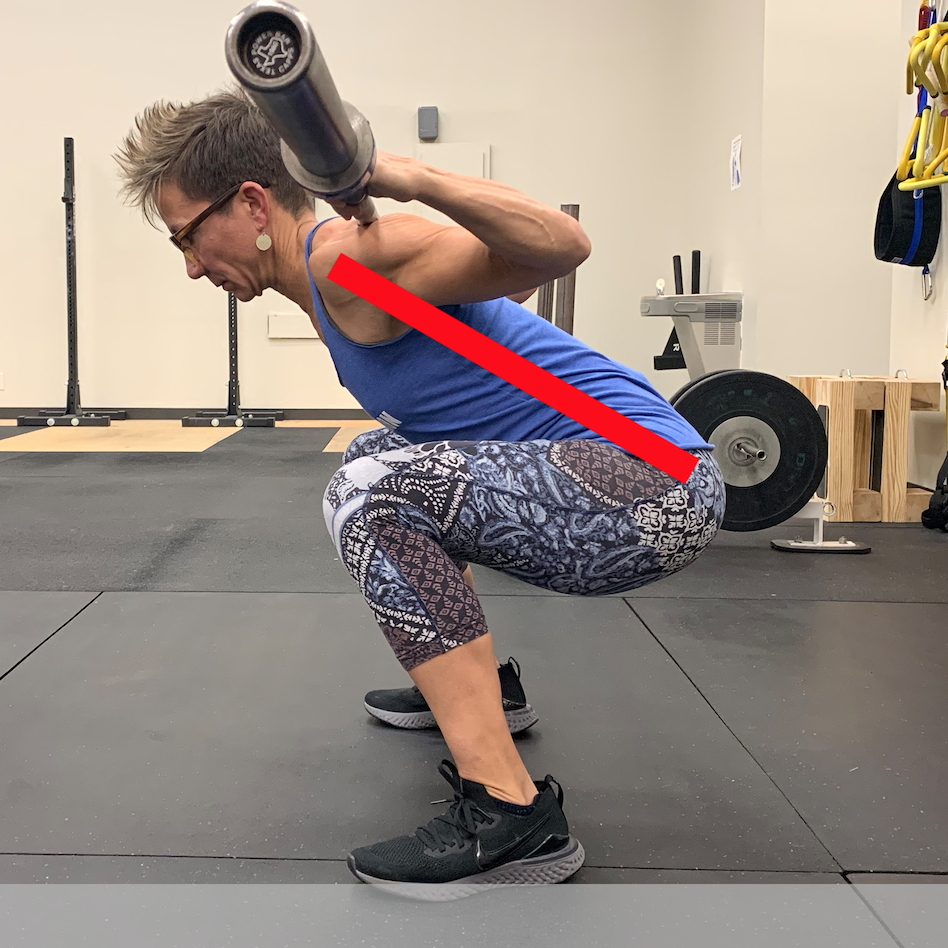Squats are considered by many to be the King of compound movements. Love them or hate them, there's some squat variation in almost every strength training program. There are countless variations: the two most common are high bar and low bar.
The defining difference between high bar and low bar is BAR PLACEMENT. Bar placement affects the joint angles involved; in other words, it influences how force is applied to your low back, knees, and hips. Bar placement dictates everything else.
BAR PLACEMENT:
In a HIGH BAR squat, the bar should sit on top of your traps (not on your vertebrae). In a LOW BAR squat, the bar should sit below your traps and above your rear delts. This is very important: the traps keep the bar from creeping up, and the rear delts keep the bar from sliding down.

HAND PLACEMENT:
In HIGH BAR squats, your hands should be close to your shoulders. The close grip allows you to build a big "shelf" of muscle for the bar to rest on. If you're squatting with a LOW BAR position, your hand position will be on the bar ring - or even wider. Shoulder and thoracic mobility will affect the width of your grip.
THUMB POSITION:
Your thumbs should be UNDER the bar when doing HIGH BAR squats and ON TOP OF THE BAR when doing LOW BAR squats. One key thing to note: when doing LOW BAR squats, the weight of the bar should NOT be resting in your hands. You should be pushing the bar into your back!

TORSO ANGLE
When doing HIGH BAR squats, your torso angle will be more upright, and in the bottom position, your knees will travel in front of your toes. When doing LOW BAR squats, your torso will have a much more forward lean, and your shins will be closer to vertical. Both positions ensure that the bar will remain over the base (basically the front of your ankle) during the entire movement.

FOOT POSITION
A HIGH BAR squat means your feet will be hip to shoulder-width apart, toes turned out slightly. A LOW BAR squat requires a much wider stance - your feet will be outside your shoulders. Toes will still be turned out slightly.

WHICH IS BETTER?
One isn't necessarily better than the other. It really depends on your goals. If you're a competitive powerlifter, you'll most likely LOW BAR squat (but not necessarily). If you're squatting to improve general fitness or to improve performance in another sport, you'll probably HIGH BAR squat. Probably. It really depends on a lot of factors.


